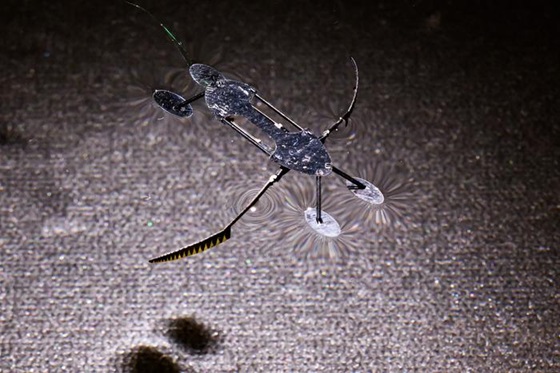Researchers at Washington State University have developed two insect-like robots: a mini-bug and a water strider. These robots are, according to the researchers, the smallest, lightest, and fastest fully functional micro-robots to date. Their development opens up new possibilities in various applications, including artificial pollination, search and rescue, environmental monitoring, micro-fabrication, and robotic-assisted surgery.
The mini-bug weighs just eight milligrams, and the water strider is slightly heavier at 55 milligrams. Both robots are capable of moving at a speed of around six millimeters per second. This speed, while impressive for micro-robots of this scale, is still slower compared to their biological counterparts such as ants, which can move up to a meter per second.
A key innovation in these robots is their tiny actuators, which facilitate movement. Conor Trygstad, a PhD student at WSU’s School of Mechanical and Materials Engineering and the lead author of the study, employed a novel fabrication technique to miniaturize these actuators to less than a milligram. This achievement has led to the creation of the smallest and fastest actuators for micro-robotics, as stated by Néstor O. Pérez-Arancibia, who led the project.
The actuators utilize a shape memory alloy, capable of changing shapes when heated and returning to their original form afterwards. This technology, which lacks moving parts or spinning components, is generally not used in large-scale robotics due to its slow response. However, in these micro-robots, the actuators are composed of two tiny shape memory alloy wires, only 1/1000 of an inch in diameter, that can be quickly heated and cooled. This allows the robots to move their parts at up to 40 times per second and lift more than 150 times their weight.
The shape memory alloy (SMA) technology also offers the advantage of requiring minimal electricity or heat to operate, making it more energy-efficient than other robotic movement technologies.
An interesting aspect of this research is Trygstad’s inspiration from nature. Being an avid fly fisherman, he has closely observed water striders and aims to replicate their efficient rowing motion. While the WSU water strider robot currently uses a flat flapping motion, the goal is to emulate the natural insect’s more efficient movement. Furthermore, the team is working towards creating a water strider-type robot that can navigate both on top and just under the water surface. They are also exploring the use of tiny batteries or catalytic combustion to make these robots fully autonomous and independent of external power sources.
Credit: WSU Photo Services

